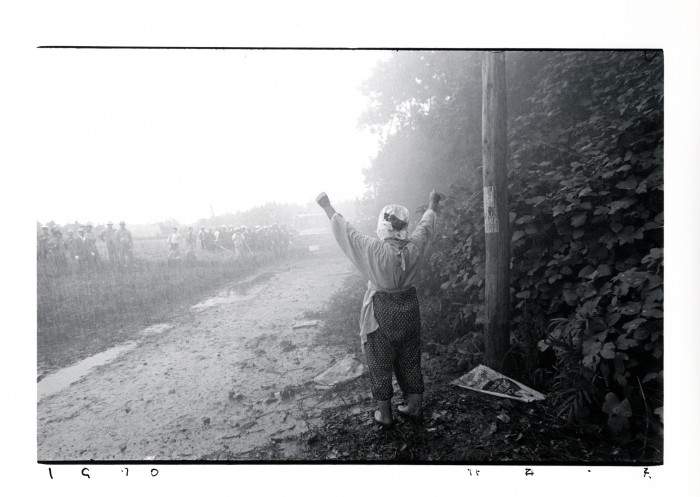
"Old Lady Faces the Water Cannon," 1970 © Kazuo Kitai
“Old Lady Faces the Water Cannon.” In the background of this photo, you can see another photographer shooting this picture. Kitai is a photographer who chooses a side. He, too, is facing the water cannon.
—
Taking photos from wide angles makes it clear that his photos are not some kind of humanistic, “let’s celebrate people!” kind of project. (Mura-e) He’s giving everything in context. Photo of woman in her room, you can see stuff on the walls etc, not just about her face or something.
Kitai’s movement is really notable. Protests -> Sanrizuka -> Villages, may look obvious now but wasn’t at that time. This development is intructive, as if it’s a way for him to leave clues behind for future viewers of his work. Each step/move required a certain commitment, i.e. live in Sanrizuka, spend time traveling in countryside etc…
—
Details of objects in barricades. That’s nice, hard to explain why those photos work, but you know that you’re inside the place.
Barricade objects (background):
chair (graffiti, foot)
wall (graffiti, some kind of cord)
helmets (characters on it, writing in back)
boot
umbrella (graffiti)
coathanger
toilet paper
briefcase (lots of graf)
washstand (soap, cigarette butt, razor, toothbrushes)
drying clothes
mimeograph
Fukushima photo echoes with Sanrizuka—trucks across landscape—maybe a more positive meaning of construction with F.
<quick notes added now>
This was an excellent show, a fully realized career retrospective. Kitai’s image of the mimeograph deserves to have pages written about it.